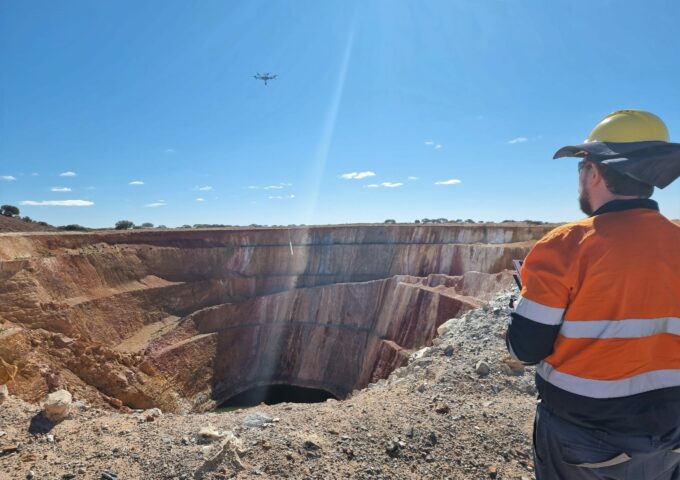
Paul Meyer is an Environmental Scientist with our Site Assessment and Remediation (SAR) team in Perth. He is also a qualified drone pilot and heads up our Drone services for Western Australia. When he’s not out and about doing a risk assessment on a contaminated site you may well find him soaring to new heights with his latest recruit ‘Djinda the Drone’
How is Tetra Tech adopting new technology to help our clients?
I am a self-proclaimed IT and software tragic and have always been interested in technology and how it can be used to solve problems. I hold a Remote Pilots Licence for operation of unmanned aerial vehicles and have enjoyed the use of drones for a number of years, particularly focusing on how they can be used to support our business. Tetra Tech acquired two drones as part of an innovation grants program, and when they were looking for volunteers to become drone pilots and find ways to incorporate this technology as part of our services, I immediately put my hand up.
What are you currently using drone technology for?
Our Drone has been helping our teams improve our ability to collect data related to remote and inaccessible areas or from infrastructure which may pose a safety risk. Djinda can perform several tasks such as safely taking aerial footage for surveillance of ecological communities and collecting samples from surface water features across Western Australia. Our latest project is assisting with collection of water samples from redundant mine pit voids with steep embankments which are in poor condition. Our Drone service is being expanded to be able to collect vital information related to external asset inspection including the stability and integrity of tailings dams.
Why sample mine pit voids?
Mine sites have specific requirements within their licence to sample water within their redundant mine pits. Typically, it is once or twice a year but others may be more frequently as determined by the Environment Protection Authority. The traditional process for taking samples in Mine Pits is complex, time consuming and has associated safety risks, particularly for clients who have multiple pits of varying condition and in remote locations.
We have found that certain high- performance drones are perfect for this type of application.
It is surprisingly quick to use Drones for collection of water samples. After a bit of set-up, I can get in and out of a Pit in less than 10 minutes. This is compared to our traditional methods like walking down each bench level until we reach the water level or, for pits where the walls have collapsed, abseiling down the mine pit face to retrieve the sample. Our drone can travel up to 5km away so even with the largest, most inaccessible mine pit voids there are no issues to fly right in and collect a sample for testing from the ideal location.
Trials using drone technology has delivered savings in time, cost and is ultimately a much safer option which ticks a lot of boxes for our clients.
It’s all part of us collaborating to find new ways for us to help our clients.
Can you tell us about ‘Djinda the Drone’
Djinda is a DJI Matrice 600 Pro enterprise drone with a wingspan of just over 1.5m, weighing in at 11kg (24 pounds) and can carry up to 6kg in payload. People may be familiar with recreational drones that are used for fun, which in comparison are usually 2- 2.5kg (5 pounds) in size.
What are some of the challenges with using this technology?
Operating large drones for collection of data in unsafe or inaccessible places requires strategic flight planning, authorisation to fly within certain airspace and coordination with weather conditions to ensure a safe flight every time.
Understanding the limitations to what can be achieved using drones is important to ensure that the correct data is collected at the highest quality and with acceptable data integrity. The challenge is assessing all the variables and planning how to limit their influence during the data collection process.
Finally, how did you come up with the name?
We turned to our associates across our Tetra Tech family to give our drone a name. Djinda’s name means ‘star’ and comes from the Nyungar Australian Aboriginal language which is still spoken by members of the Noongar community who live in the southwest corner of Western Australia.
To find out more, contact Paul Meyer on +64 417 082 182 or paul1.meyer@tetratech.com